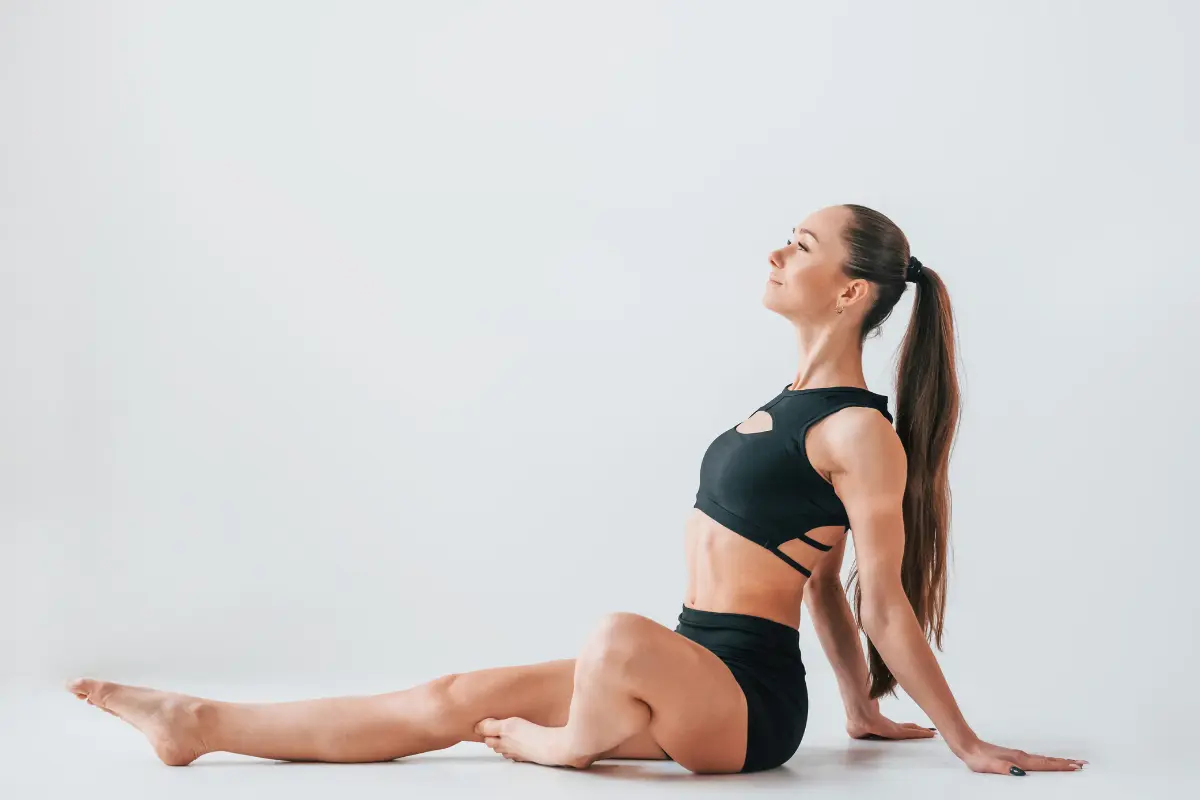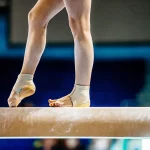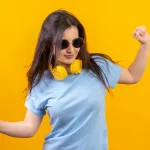Female gymnasts are known for their powerful, agile, and compact physiques, but the idea of the “gymnast body” has changed significantly over the past few decades. The sport has evolved, the scoring system has shifted.
What Body Type Is Most Common Among Female Gymnasts?
Although there is no single perfect gymnast body, studies over the years have identified several common characteristics among elite female artistic gymnasts:
1. Compact Height and Lower Body Mass
Across studies, elite gymnasts tend to be:
- Shorter than average for their age
- Lighter, with low-to-moderate body fat
- Muscular without excessive bulk
These traits provide several performance advantages:
- Faster flipping and twisting due to lower moment of inertia
- More stable balance on beam and landings
- Greater power relative to bodyweight
A compact frame makes it easier to create tight shapes in the air, initiate rotation quickly, and absorb the impact of jumps and tumbling.
2. Somatotype: Ecto-Mesomorphic or Lean Mesomorphic
Most female gymnasts fall into one of two somatotype categories:
Ecto-mesomorph
Lean frame + noticeable, functional muscle
→ Ideal for fast rotation, strong swings, and clean body lines.
Meso-ectomorph
Primarily muscular but still lightweight and agile
→ Ideal for power tumbling, vaulting, and dynamic bar releases.
Together, these somatotypes support:
- Explosive tumbling
- Efficient bar swings and transitions
- Stable landings
- Fluid beam movement
It’s a balance of strength, lightness, and control.
3. High Strength-to-Weight Ratio
Gymnasts must repeatedly lift, swing, flip, and propel their own bodies. This means performance depends less on absolute strength and far more on relative strength.
A strong, lean build allows gymnasts to:
- Jump higher
- Swing farther
- Maintain tight aerial shapes
- Stick landings with precision
High muscle density + low body mass = peak efficiency.
Trends & Changing Norms in Gymnastics Bodies
Gymnastics is undergoing a major transformation. The bodies succeeding today look different from those of the 1980s, 1990s, or even early 2000s.
Several powerful trends explain why.
Trend 1: More Muscular, More Powerful Athletes
Recent world and Olympic champions display greater muscle mass, stronger legs and shoulders, and more visible power. This represents a shift away from the outdated stereotype of the “tiny, prepubescent” gymnast.
Modern routines require:
- Bigger tumbling (double layouts, full-ins, triple twists)
- Higher-difficulty vaults
- Dynamic, high-flying bar release moves
- More amplitude and explosiveness across events
To meet these demands, today’s gymnasts must develop significant strength, so their bodies naturally reflect that training.
Trend 2: Function Over Aesthetics
Coaches and sport scientists now prioritize:
- Functional strength
- Power and joint stability
- Healthy body composition
- Sustainable training and recovery
Rather than conforming to strict body ideals or extreme leanness, the modern approach emphasizes:
- Long-term athlete development
- Injury prevention
- Adequate fueling and energy availability
- Mental and physical health
This shift improves both performance and career longevity.
Trend 3: A Broader Range of Heights and Body Shapes
While compact builds still offer certain advantages, elite gymnastics now showcases greater diversity:
- Taller gymnasts succeeding on bars and beam
- More muscular gymnasts dominating vault and floor
- Longer-limbed athletes excelling in artistry and dance elements
- Athletes with wider hip or shoulder proportions performing at the highest levels
The sport is moving toward a realistic understanding: There is no single “gymnast body.”
Different builds bring different strengths, and the Code of Points increasingly rewards a mix of power, amplitude, and artistry rather than one narrow body shape.
Common Traits Among Many Female Gymnasts
While not universal, the following characteristics appear frequently among elite gymnasts:
- Lean build with lower body mass
- Relatively compact stature
- Ecto-mesomorphic or lean-mesomorphic somatotype
- Low-to-moderate fat mass
- High strength-to-weight ratio
- Excellent flexibility, coordination, and balance
These traits support the sport’s key physical demands:
- Rotation
- Power
- Agility
- Body control
- Balance
But These Traits Are NOT Universal
Equally important:
- Not every gymnast is short.
- Not every gymnast is tiny.
- Not every gymnast looks the same.
- Physique alone does not determine success.
Many top gymnasts break the old mold entirely.
As the sport evolves, it increasingly rewards power, resilience, and athletic ability, not narrow aesthetic ideals. Healthy growth, proper nutrition, and emotional well-being matter far more than meeting a specific look.
What This Means for Aspiring Gymnasts, Parents, and Coaches
Here are the key takeaways for anyone involved in the sport:
1. Don’t Chase an “Ideal Body Type.”
There isn’t one.
Trying to force an athlete into an aesthetic mold often causes harm physically and mentally.
2. Focus on What the Body Can Do, Not What It Looks Like.
The best gymnastics body is one that can:
- Learn skills safely
- Build strength and flexibility
- Progress through levels
- Stay healthy and fueled
- Recover from training
3. Support Healthy Growth and Nutrition
A strong, well-nourished gymnast progresses faster, avoids injuries, and builds confidence.
4. Embrace Variation
Different bodies excel at different skills:
- Stronger athletes may thrive on vault or tumbling
- Longer-limbed gymnasts may shine on beam or bars
- Flexible athletes may excel in leaps, spins, and dance elements
There is room for many shapes and sizes in this sport.













